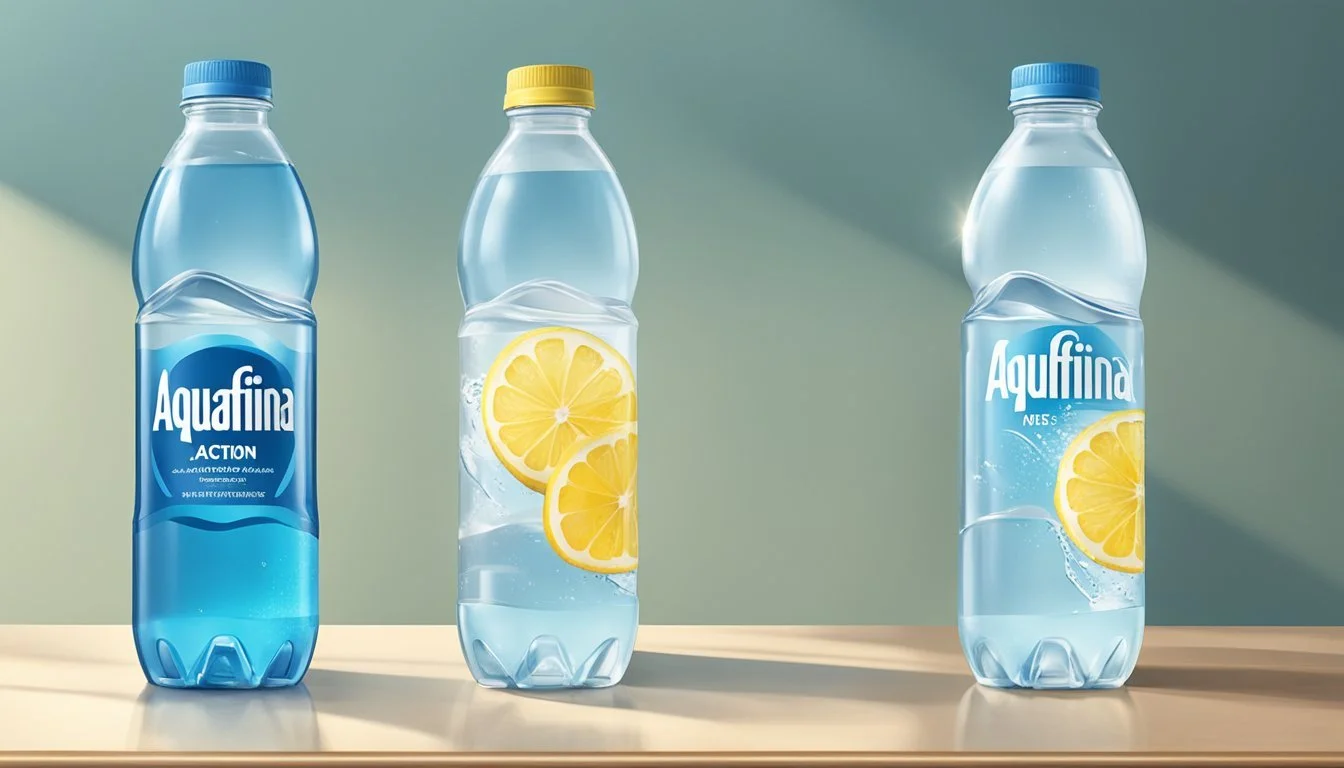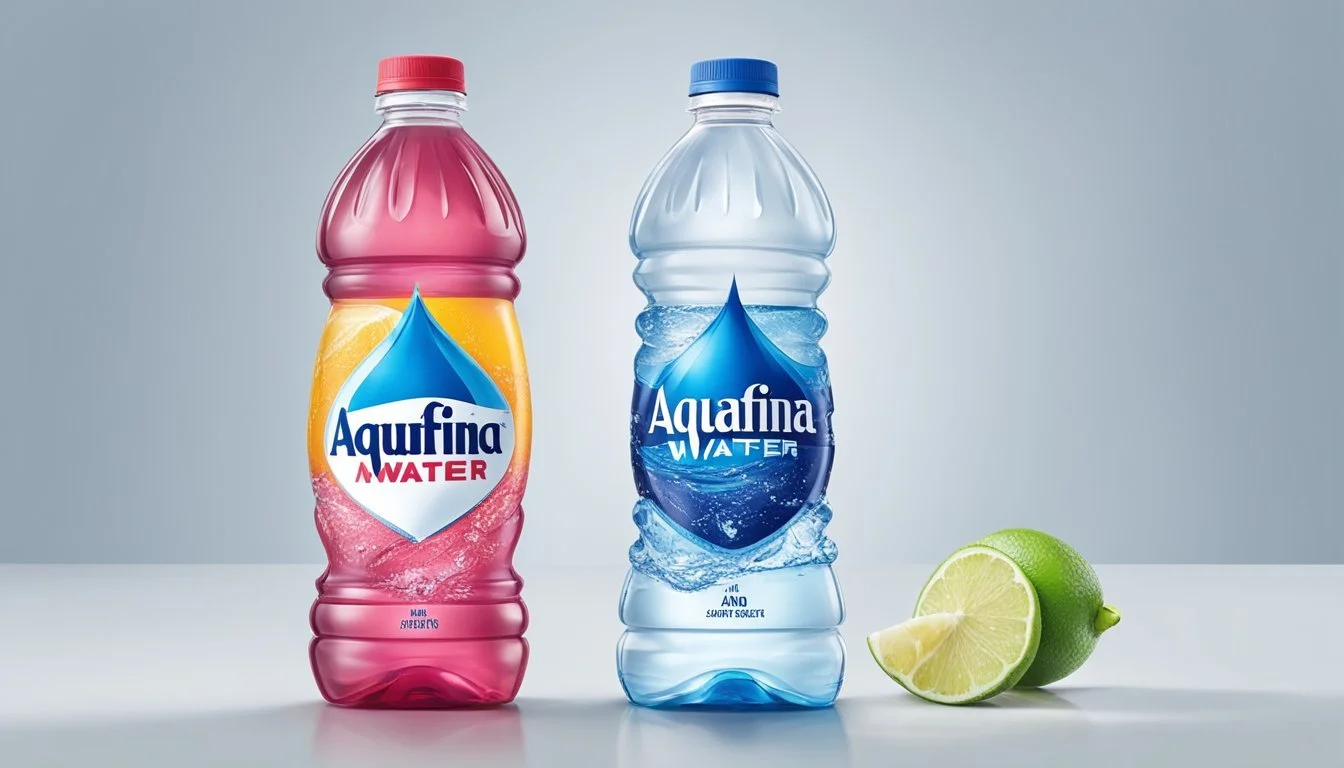Aquafina vs. Action
Comparing Quality, Taste, and Value
When it comes to choosing between Aquafina and Action bottled water, consumers often seek clarity on which option offers superior hydration. Aquafina, produced by PepsiCo, is known for its consistency and widespread availability. It undergoes a rigorous purification process, ensuring a crisp, clean taste that many people trust.
Action bottled water, although not as globally recognized as Aquafina, prides itself on its eco-friendly practices and commitment to sustainability. It's sourced from natural springs, offering a refreshing alternative that appeals to environmentally conscious consumers.
For those prioritizing pure taste and reliable quality, Aquafina stands out as the better choice. Yet, for buyers who value environmental impact, Action provides a commendable option. Exploring the details of each brand’s offerings will help you make an informed decision.
Understanding Bottled Water
Bottled water comes in various forms and plays a crucial role in hydration and health. The sections below cover different aspects, including the basics of bottled water, its health implications, types, and environmental considerations.
The Basics of Bottled Water
Bottled water is packaged in plastic or glass containers and sold for drinking purposes. It goes through a purification process to meet safety standards. Spring water, purified water, and mineral water are common types.
Spring water is derived from underground formations and flows naturally to the surface.
Purified water undergoes processes like reverse osmosis, distillation, and deionization to remove impurities. Mineral water contains minerals that occur naturally or are added later.
Hydration and Health Implications
Water is essential for maintaining bodily functions, such as regulating temperature, transporting nutrients, and removing waste. Bottled water provides a convenient option for staying hydrated.
Unlike tap water, bottled water does not contain chlorine or other disinfectants used in municipal systems.
However, some argue that the absence of fluoride, which helps prevent tooth decay, is a downside. Ensuring regular water intake from any source is crucial for overall health.
Source and Types of Bottled Water
The source of bottled water impacts its taste and quality. Aquafina and Dasani are examples of purified water brands that use municipal sources.
Spring water comes from natural springs, while mineral water originates from mineral-rich underground reservoirs.
The classification often depends on marketing and source:
Spring Water: Natural springs
Purified Water: Municipal sources treated extensively
Mineral Water: Mineral-rich sources
Understanding these sources helps consumers choose water based on their preferences and needs.
Environmental Considerations
Bottled water production and disposal have significant environmental impacts, particularly plastic waste.
Plastic bottles contribute to landfill and marine pollution, with millions of tons discarded annually. Recycling efforts exist, but they are insufficient to counter the high production rates.
Consumers can mitigate this impact by choosing brands that use recycled materials or opting for reusable bottles. Companies and individuals should both strive for sustainable practices to reduce environmental harm.
Examining Aquafina and Action
When evaluating Aquafina and Action bottled waters, it's essential to look into their brand profiles, quality and purity standards, flavor profiles, and packaging for consumer handling. This comprehensive examination helps consumers understand what differentiates each brand.
Brand Profiles: Aquafina and Action
Aquafina: A product of PepsiCo, Aquafina is known for its rigorous 7-step HydRO-7 purification system. This process ensures the removal of impurities, delivering a clean drinking experience. Its strong presence in the bottled water market is supported by extensive distribution and marketing.
Action: Although not as globally recognized as Aquafina, Action targets a niche market that values sustainability and innovative purification methods. Action implements reverse osmosis and other advanced filtration techniques to maintain high standards of water quality.
Quality and Purity Standards
Aquafina: Aquafina's 7-step HydRO-7 system is thorough, focusing on eliminating contaminants. The result is a product that consistently meets high-quality standards. PepsiCo emphasizes this purification to ensure the safety and purity of its water, appealing to health-conscious consumers.
Action: Action uses reverse osmosis and additional proprietary filtration technologies. These methods aim to achieve similar purity levels as Aquafina, ensuring that the water is free from harmful substances. Action's commitment to quality is evident in its focus on filtration and sustainability.
Flavor Profiles and Palate Experience
Aquafina: Known for its clean and crisp taste, Aquafina's flavor profile is largely neutral, making it a popular choice for those who prefer water without distinct mineral flavors. The stringent purification process removes most flavors, leading to a pure and refreshing experience.
Action: Action's water has a subtle mineral presence due to the addition of essential mineral salts post-filtration. This results in a slightly enhanced taste, which some consumers find more appealing. The balance between purity and flavor is a key selling point for Action.
Packaging and Consumer Handling
Aquafina: Packaging is straightforward with a focus on convenience and durability. Aquafina bottles are designed for easy handling and resealability, making them suitable for on-the-go consumers. The branding is clear, emphasizing purity and quality.
Action: Action places a strong emphasis on environmentally friendly packaging. Utilizing recycled materials and promoting recyclability are core components of Action's packaging strategy. This eco-conscious approach attracts consumers who are mindful of their environmental impact.
By highlighting these specific aspects of Aquafina and Action, consumers can make informed decisions based on brand reputation, quality standards, taste preferences, and environmental considerations.
Comparison of Aquafina and Action
Aquafina and Action both offer unique characteristics that appeal to different consumer needs and preferences. Key areas of comparison include taste, health implications, purification processes, and cost.
Taste and Preference Analysis
Aquafina is known for its crisp, fresh taste, achieved through a rigorous purification process that removes most dissolved solids. This can result in a neutral flavor profile.
Action, on the other hand, claims a slightly mineralized taste due to added electrolytes, which can make it more appealing to those preferring a flavored hydration experience.
Health Benefits and Concerns
Aquafina undergoes a thorough purification process, including reverse osmosis. This removes contaminants and ensures low mineral content, which some argue may not provide necessary trace minerals.
Action promotes its added minerals and electrolytes, which can be beneficial for those needing replenishment during exercise. Consumers should check for any added sodium or preservatives that might affect health.
Production and Filtration Processes
Aquafina's production involves a comprehensive 7-step HydRO-7 purification process, which includes reverse osmosis and ozone sterilization, ensuring a high purity level.
Action employs a filtration process that also emphasizes purity but includes the addition of electrolytes post-filtration. This can enhance taste and hydration but may also alter the water’s natural profile.
Cost and Value Comparison
Aquafina is typically priced competitively and is widely available, making it a convenient option for many consumers. Its value proposition rests on its high purification standards.
Action often comes at a higher price point due to the added electrolytes and promoted health benefits. Consumers may opt for Action when looking for enhanced hydration solutions, justifying the cost for added benefits.
By comparing these aspects, consumers can make an informed decision based on their specific needs and preferences.
Exploring Alternative Bottled Water Brands
Consumers today have a variety of bottled water options, ranging from premium brands to eco-friendly alternatives. Each brand offers different benefits such as taste, health additives, or sustainable practices.
Premium Bottled Waters
Premium bottled waters often boast unique sources and rigorous filtration processes. Evian, originating from a natural spring in the French Alps, contains naturally occurring electrolytes and minerals. Fiji Water is sourced from an artesian aquifer in Fiji and is notable for its silica content, which contributes to a smooth taste.
Voss from Norway is known for its low mineral content and stylish packaging. Smartwater uses vapor distillation and adds electrolytes for enhanced taste. These brands focus on purity, taste, and exclusivity.
Eco-Friendly and Sustainable Options
Eco-friendly bottled water brands are gaining traction as consumers become increasingly aware of environmental issues. Brands like JUST Water use plant-based cartons to reduce plastic usage. Boxed Water Is Better offers water in recyclable and biodegradable cardboard cartons.
Some brands, such as Ethos Water, contribute portions of their profits to water access projects. These brands prioritize sustainable packaging and corporate social responsibility, appealing to environmentally conscious consumers.
Emerging Trends in Bottled Water
Emerging trends in bottled water focus on health benefits and advanced filtration technology. Alkaline waters like Essentia claim to offer benefits such as improved hydration and acid-neutralizing properties. Electrolyte-infused waters are marketed for athletes and those looking to replenish essential minerals.
Another trend is flavored waters without added sugars or calories, enhancing hydration with a pleasant taste. CBD-infused and enhanced pH waters are also entering the market, providing more options for health-focused consumers. These trends highlight innovation and the evolving preferences of bottled water drinkers.
Consumer Insights and Market Trends
Aquafina and Action compete fiercely in the bottled water market. Insights into consumer preferences, market dynamics, and regulatory standards offer a comprehensive understanding of their standings.
Consumer Preferences and Reviews
Consumers prioritize taste and purity when selecting bottled water. Aquafina's 7-step HydRO-7 filtration and Action's distinct mineral additions cater to these desires. Reviews indicate a preference towards waters that offer a clean, crisp taste without aftertaste.
Social media platforms like Twitter frequently feature debates among consumers regarding the best-tasting water, with many praising the crispness of Aquafina. Action emphasizes its purity and balanced mineral content, appealing to a health-conscious demographic.
Brand loyalty also plays a significant role. Reviews often highlight lifelong preferences formed based on consistent taste and quality.
Market Dynamics and Bottled Water Sales
The bottled water industry is highly competitive and lucrative. Global sales have surged, reflecting a growing consumer trend towards healthier beverage options. Aquafina and Action are significant players, each commanding substantial market shares.
Aquafina leverages PepsiCo’s extensive distribution network, enhancing its availability and market penetration. Action adopts a more targeted marketing strategy, focusing on niche markets that prioritize health and wellness.
Price points and packaging options also affect consumer choices. Both brands offer various bottle sizes and price ranges to cater to a wide audience, including bulk purchasers and individual buyers.
Regulations and Health Standards
Health and safety standards are critical in the bottled water industry. Both Aquafina and Action adhere strictly to regulatory guidelines set by entities like the FDA and EPA. Compliance ensures that their products are free from contaminants and safe for consumption.
Aquafina’s purification process, which includes reverse osmosis and ozonation, meets these stringent standards. Action's filtration methods, coupled with added minerals, also fall within acceptable health parameters.
Both companies conduct regular quality checks and follow best practices to maintain high standards. This vigilance ensures consumer trust and reliability in their products.
The Future of Bottled Water
The bottled water industry is evolving to meet consumer demands for higher quality, sustainability, and transparency. This section covers innovations in filtration methods, sustainability initiatives, and educational outreach efforts.
Innovations in Water Filtration and Purification
Advancements in water purification are pivotal for improving bottled water quality. Companies are incorporating ultraviolet light treatment, which effectively kills bacteria and viruses.
Reverse osmosis and nano-filtration are also gaining prominence, offering superior removal of contaminants. Aquafina, for example, uses a proprietary 7-step filtration process aimed at eliminating impurities.
Enhanced mineralization techniques are being applied to improve taste while maintaining purity. As technology advances, these methods become more efficient, reducing energy use and costs.
Sustainability Goals and Industry Shifts
The bottled water industry faces increasing scrutiny over its environmental impact. Leading brands are making significant strides in sustainability by introducing recyclable packaging and plant-based bottles.
Efforts to reduce plastic waste include the use of biodegradable materials and encouraging recycling through consumer incentives. Companies are also investing in water stewardship programs to ensure sustainable sourcing.
Collaborations with agencies like the Environmental Protection Agency help set stringent environmental standards, promoting a greener industry.
Consumer Education and Outreach Efforts
Educating consumers about water quality and sustainability is essential. Brands are leveraging digital platforms to disseminate information on their purification processes and environmental initiatives.
Transparency is key. Providing clear labeling helps consumers make informed choices. Outreach programs and partnerships with educational institutions promote awareness of water conservation and the benefits of reuse and recycling.
Interactive campaigns and social media engagement facilitate better consumer understanding of the environmental and health impacts associated with bottled water choices.





